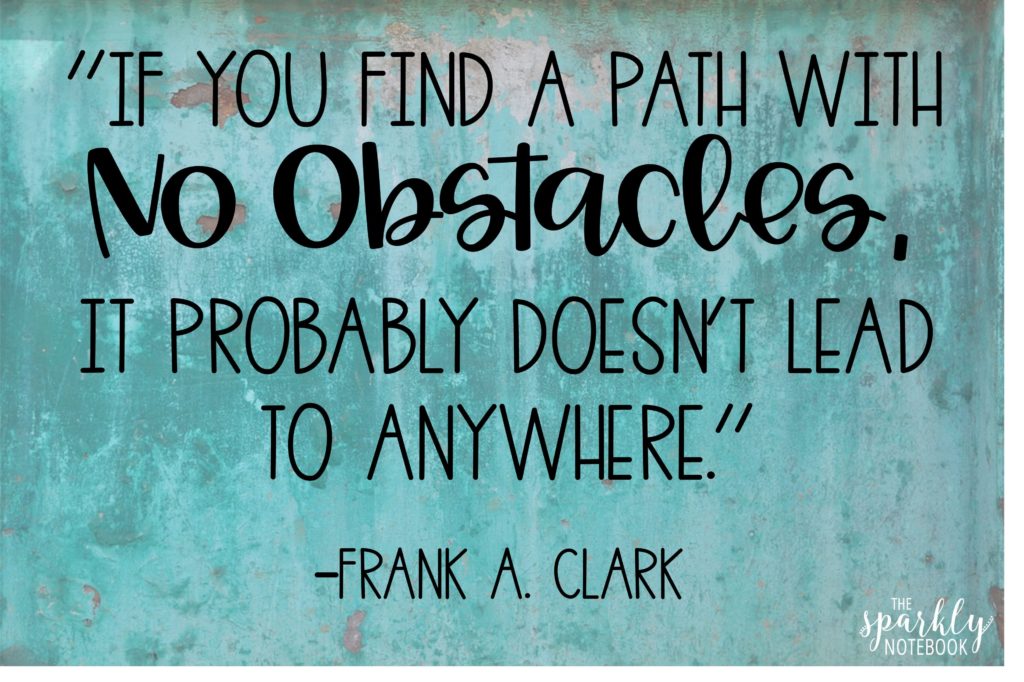We live in a time where the pressure to be perfect is high, and our students feel that on a daily basis. As they get on Instagram, Facebook, Snapchat, or other social media platforms, the comparison game is intense. Sometimes these self-doubts and self-esteem pressures can also make their way into the classroom. For this reason, it’s a part of our job to foster a growth mindset in our students.
This year, we have had several students feeling overwhelmed and afraid of failure seek to quit our gifted program at our school, and that crushes me. We’ve got to teach these students to persevere and to have a GROWTH MINDSET. Being able to look at challenges being faced and work to grow through them is a talent that we have to train. It doesn’t come naturally to face our stress and fears. It is something we have to work to overcome, and we have to show our students there is value in persevering when times get tough.

I think it is so important for us to help students realize that perfection in everything is not an expectation anyone should ever set for themselves. We need to help our students gain a growth mindset and understand that failure is truly a part of trying.
5 Ways to Foster a Growth Mindset in Our Students:
- Model It – Practice having a growth mindset yourself and set an example for the students. By allowing yourself to make a mistake and own it in front of the students, it will help them see that it does happen and that it is ok. When you don’t know something, it’s ok for the students to see this and to watch you work to figure it out. This in itself is a powerful way to show students what it looks like to work through wanting to be negative and down on yourself but pulling through it a growth mindset. Conferencing with students and helping them work through their own work can also present a good opportunity to model the growth mindset.
- Consistently Use Growth Mindset Terminology – When providing feedback to students, try to practice using growth mindset terminology and encourage them to give feedback to each other using it as well. It may be helpful to put up some Growth Mindset posters, so you and students can refer to them when responding to one another. This will help you know the best ways to respond to encourage a growth mindset. Check out my Growth Mindset Posters here.
- Practice with Students Using Activities – Plan to incorporate some activities that help students practice with the Growth Mindset. You can find some activities online, or you can check out my Growth Mindset Activity BUNDLE here if interested. It’s a series of activities that you can do with students over a week or month to help them with their own growth mindset.
- Share Your Own Experiences – Talk to students about your mistakes and failures and how you overcame them. Just be real with them and don’t set the expectation of perfection. Some of my best moments of connecting with students was talking to them about my own past failures and how I grew from them. Let them see you as human.
- Encourage Students to Try New Things and Provide Opportunities – One of the saddest things about students struggling with the growth mindset is their hesitancy in trying new things because of a fear of failure or not being good enough. Try to encourage them to challenge themselves and try something new. If possible, create opportunities in your classroom for the students to try new things and expand their interests.
As we move forward in a world where the expectations are high, let’s work together to make it a priority to help our students gain a growth mindset, so they can be prepared to take on the challenges life can throw our way.
Creating a growth mindset in our students should be something we enjoy getting to do. It is truly an opportunity for us to make a LASTING impact on our students.
Happy Growing Your Students’ Mindsets!



